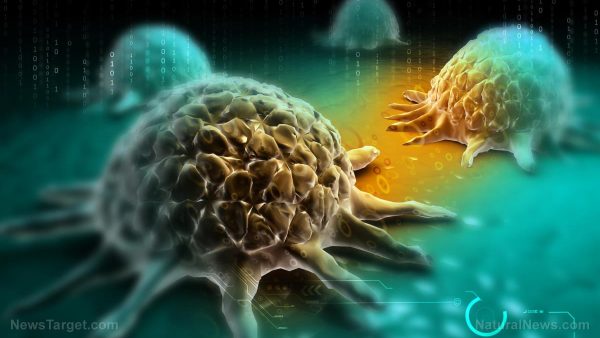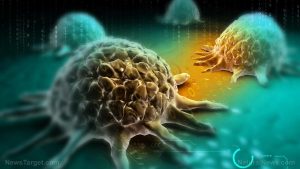
Paraganglioma – causes, side effects and treatments at NaturalPedia.com
Tuesday, June 19, 2018 by Michelle Simmons
http://www.naturalpedia.com/paraganglioma-causes-side-effects-and-treatments-at-naturalpedia-com.html

Paraganglioma is a rare, usually noncancerous tumor that develops from cells of the paraganglia. Paraganglia are a group of cells that came from embryonic nervous tissue. They are located near the adrenal glands and some blood vessels and nerves. Paragangliomas that occur in the adrenal gland are called pheochromocytomas. Those that develop outside of the adrenal glands near blood vessels or nerves are called glomus tumors or chemodectomas.
Paraganglioma can affect people of any age, but it most often develops between the ages of 30 and 50. The tumor is often slow-growing and noncancerous. However, it can invade nearby parts of the body, become cancerous, and spread distantly. Paragangliomas may grow anywhere there are sympathetic nerve cells or along any of the main arteries in the body.
Paragangliomas can be found in the skull area, neck, chest cavity, abdomen, pelvis, and bladder, with abdomen being the most common site.
Most paragangliomas are not genetic in origin, but the only known risk factor is a family history of them. There are also many rare syndromes associated with paraganglioma. Rare syndromes such as neurofibromatosis type 1, Von Hippel-Lindau syndrome, and familial paraganglioma syndrome are the most common.

Known side effects of paraganglioma
The most common side effect of paraganglioma is high blood pressure, which may be hard to manage and can result in heart attack, stroke and death. Other side effects of paraganglioma include a strong, fast, or irregular heartbeat, tremors in the hand, severe headache, heavy sweating for no reason, being extremely pale, chest or abdominal pain, nervousness, irritability, and trouble sleeping.
Body systems harmed by paraganglioma
The body systems harmed by paraganglioma are the endocrine, nervous, and cardiovascular systems.
List of foods or nutrients that prevent paraganglioma
There is no information on what foods or nutrients prevent paraganglioma.
Treatments, management plans for paraganglioma
Treatment options for paraganglioma include surgical removal of the tumor/s and medical therapy to block the effects of adrenaline excess. Other treatments include radiation therapy and thermal ablation therapy.
Where to learn more
- Young mom learns she may die of cancer after doctor misdiagnosed and put her through unnecessary chemo
- Researchers struggle to find effective way to mitigate damage done by atrazine, a common weedkiller known to harm human health, wildlife, aquatic life
- Aspartame: Is the Sweet Taste Worth the Harm?
- Aspartame is a hidden schedule II narcotic
- Cancer – Taking Your Power Back! Part 1
Summary
Paraganglioma is a rare, usually noncancerous tumor that develops from cells of the paraganglia.
Paraganglioma causes high blood pressure, which can result in heart attack, stroke and death, a strong, fast, or irregular heartbeat, tremors in the hand, severe headache, heavy sweating for no reason, being extremely pale, chest or abdominal pain, nervousness, irritability, and trouble sleeping.
Paraganglioma harms the endocrine, nervous, and cardiovascular systems.
Paraganglioma can be treated with surgery and medication.
Sources include:
Tagged Under: Tags: Paraganglioma





